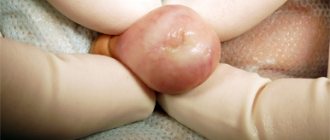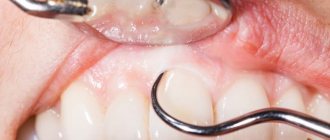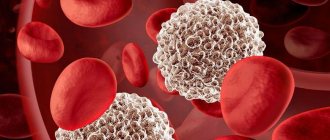Urologist
Mkrtchyan
Karen Gagikovich
13 years of experience
Candidate of Medical Sciences, member of the European Association of Urology and the Russian Society of Oncourologists
Make an appointment
Author of the article: Mkrtchyan Karen Gagikovich, Urologist, Candidate of Medical Sciences, member of the European Association of Urology and the Russian Society of Oncourologists
Balanoposthitis occurs only in the male population. The disease is quite widespread. According to statistics, this disease is diagnosed in 11% of the entire world population. The peculiarity of balanoposthitis is that the disease combines 2 diseases at once. With this ailment, the head of the penis and its foreskin are simultaneously affected. There is also separate balanitis, when the head of the penis itself becomes inflamed, and fasting, if only the foreskin of the organ becomes inflamed. However, if the nature of the disease is infectious, then the damage will quickly spread to both areas, since they are located next door.
Symptoms and signs of balanoposthitis
Symptoms are varied, but most often there are several phenomena that indicate the presence of pathology. So, balanoposthitis in men has the following symptoms:
- feeling of discomfort, itching and burning in the penis area;
- the foreskin is swollen and red;
- atypical discharge from the penis appears, which smells unpleasant and looks like pus;
- erosive processes on the surface of the genital organ;
- lymph nodes have increased in size;
- apathy, lethargy, chronic fatigue;
- frequent, recurrent headaches;
- increased body temperature;
- the head of the penis stopped opening due to swelling of the organ.
Balanoposthitis also has the following symptoms:
- blood rushes to the head of the penis;
- red-scarlet spots with clearly defined edges appeared;
- unpleasant discomfort when emptying the bladder and during intimacy, other manifestations of pathology.
Do you have symptoms of balanoposthitis?
Only a doctor can accurately diagnose the disease. Don't delay your consultation - call
Types of balanoposthitis (balanitis)
In the presence of simple balanoposthitis, the following clinical picture is observed:
- pronounced swelling and hyperemia,
- maceration of the skin of the head and foreskin,
- the formation of superficial merging or isolated erosions with purulent plaque, which can have different sizes and are surrounded along the periphery by pieces of macerated epithelium.
In the presence of erosive balanoposthitis, white swollen areas of atrophied epithelium appear. Then, in their place, larger surface erosions with a sharply demarcated bright red rim of maceration form.
Gangrenous balanoposthitis (presence of fever, general weakness, presence of deep painful purulent-necrotic ulcers of various sizes, severe swelling, hyperemia, development of phimosis).
All of the above symptoms can occur simultaneously or separately in any combination. The presence of any of these symptoms can be considered a sign of balanoposthitis.
Causes of balanoposthitis
It has been established that balanoposthitis has the following causes:
- injury to the penis;
- the foreskin was washed with one or another remedy;
- the salt content in urea has increased;
- the patient uncontrollably took all kinds of medications, which resulted in irritation of the surface of the head of the genital organ;
- there was an infectious pathogen in the human genitourinary system.
The reasons that served as a prerequisite for the development of the pathology determine how its further development will proceed. If you see a photo of balanoposthitis, then in detailed photographs there are different manifestations of symptoms. This is either irritation of the surface of the genital organ, or the presence of erosion of the skin of the penis.
Causes
The cause of inflammation of the head of the penis can be infectious or non-infectious. One of the main non-infectious causes is poor hygiene of the genital organs, as a result of which secretions begin to accumulate under the foreskin, which causes an inflammatory process. Other causes of inflammation of the head of the penis include:
- infectious and inflammatory diseases of the genitourinary system (urethritis, cystitis);
- skin diseases (psoriasis, dermatitis);
- narrowing of the foreskin (phimosis);
- trauma to the skin of the penis (burns, scratches);
- allergic reactions to hygiene products, underwear or contraceptives.
A common cause of inflammation of the glans penis in a child is uncomfortable underwear. It causes discomfort, rubs and injures the skin, causing balanitis in boys.
Routes of infection
Depending on what exactly triggered the disease, chronic balanoposthitis comes in different types. This:
- candidal balanoposthitis;
- allergic;
- circinar;
- anaerobic;
- ulcerative
Accordingly, candidal balanoposthitis in men is provoked by fungi of the genus Candida. The circinar type of pathology is caused by chlamydia. The anaerobic type of disease is caused by gram-negative microorganisms. Ulcerative pathology is caused by fungi, staphylococci, etc.
Diagnostics
Before treating inflammation of the glans in men, it is necessary to undergo a complete diagnosis. To carry out effective treatment, it is important to establish the cause of the disease. To relieve inflammation of the head of the penis, it is necessary to conduct a series of studies. In order to determine the susceptibility of pathogenic flora to the planned treatment of inflammation of the head, biomaterials are collected. A blood test is performed for the presence of infections (hepatitis, HIV, syphilis), a general blood test, a general urinalysis and a biopsy of the affected areas.
Treatment
Treatment of balanoposthitis is carried out using different methods:
- conservative methods;
- operation;
- treatment using alternative (traditional) medicine methods.
Clinics use the first 2 treatment methods. An individual treatment plan is drawn up for each patient.
Various medications are also prescribed by a specialist. Medicines are selected depending on the type of pathology and what infections it is caused by. For different types of balanoposthitis, treatment with tablets or ointments will be different. It happens that with balanoposthitis, an ointment for treatment is prescribed in conjunction with taking antibiotics.
Sometimes corticosteroids are prescribed, sometimes anti-inflammatory drugs. In some cases, zinc ointment treats balanoposthitis better than all other remedies. Therefore, it is important not to self-medicate, but to consult a specialist.
Balanoposthitis
Andrey
May 21, 2021 at 10:56 pm
Good afternoon, doctor! I have a strange situation. So I had to look for advice on the Internet. There is inflammation on the head. Nothing else really worries me. Now I will try to explain the situation. About 7 years ago there was a suspicion of candidiasis, they treated it, it seems to have gone away. Last summer there were spots on the head, they didn’t bother me, they didn’t itch, they were just there, there was no smell and no problem either. I went to the dermatologist, but there were still spots on the head (the one on the shoulders








